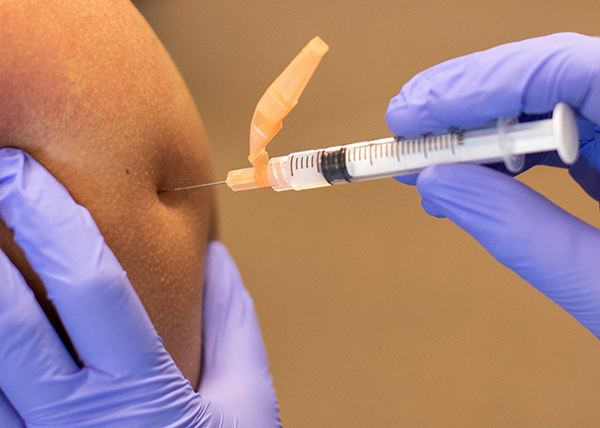
By Mark Pattison
WASHINGTON (CNS) — Inequities in U.S. health care have long existed, but the coronavirus pandemic has exposed them to wider scrutiny, according to Kathy, Curran, senior director of public policy for the Catholic Health Association.
“Hospitalization rates are four times higher, and death rates are three times higher for people of color of COVID than white folks,” Curran said during a Feb. 8 question-and-answer session, “Public Health & the Pandemic: Health Disparities & Ethical Vaccine Distribution.”
The session was part of the Feb. 6-9 Catholic Social Ministry Gathering, conducted online this year due to the pandemic.
Catching the coronavirus that causes COVID-19 is “disproportionately represented in occupations that can’t go virtual,” Curran said. That leads to “greater economic vulnerability due to sickness or working in retail businesses that might close down,” she added.
“Now that the vaccine is out, we’re also seeing that the data’s not complete yet, but these people are having less access to vaccinations,” Curran said. “In Pennsylvania and Florida, white people are being vaccinated at a four times greater the rate than African Americans.”
In the District of Columbia, where the CHA has an office, “the wards that had the higher percentage of African American people and the highest rates of deaths and hospitalization are having the lowest rates of vaccination,” she said.
Curran noted “a few issues lurking behind the disproportionate vaccination rates,” among them “people having access to the (vaccination appointment) sites. Hispanics and African American people are less likely to be insured, which means they’re less likely to have a relationship with a medical professional.”
While acknowledging “a lot of anecdotal data” at this stage, Curran said some of the vaccination sites are in “locations that are more difficult to get to in communities of predominantly Black or Hispanic residents.”
“There’s a lot of competition” to get what is still a scarce supply of vaccines, she said. “In some places, it’s hard to get an appointment.”
Making matters worse, according to Curran, is “unequal access to, for example, broadband in rural areas. Not everybody has a computer, not everybody has a good Wi-Fi signal.”
Moreover, “there’s vaccine hesitancy across the board, we know, but especially in African American communities, because there is a long history of health care discrimination in the health care system,” she added, citing the Tuskegee syphilis study in which 399 Black sharecroppers with latent syphilis went untreated for as many as 40 years, with nearly a third of them dying of syphilis or related diseases.
“It’s not illogical or surprising that African Americans in particular are hesitant or reluctant to not trust the vaccine or the effort,” Curran said.
“There is, or has been, disparities in care when they’re sick,” she said of the poor. “They don’t get the same kind of treatment on an equal basis, they don’t have the same outcomes and treatment and in exposure. Those are interrelated to the determinants of social health.”
Curran added, “If you live in an area where you don’t have good access to nutrition, where there are good, healthy housing opportunities, all of those factors contribute to health status.” She later added jobs, exercise opportunities, education as “things have an effect on health.”
She took note of the Catch-22: “Disparities in access to the social determinants of health result in health disparities” and “makes your health even worse.”
Curran said, “I don’t want to dismiss the fact of open racism, which I’m sure there is still. … But even people of the same ethnic group will treat members of their own ethnic group differently — the lingering effects of Jim Crow. It’s in the air, we breathe it, and it comes out in ways that we don’t even understand.”
“We’ve noticed that every aspect of our life is interconnected in such a way that if one of them begins to weaken, all of them begin to weaken,” said Nate Hibner, CHA director of ethics. “It’s more than just having a job, more than being able to run a mile.”
Hibner said, “Us doing it for others brings into the question of the common good. How do we help our neighbors, how do we help society at large?”
During the presentation, Clayton Sinyai, executive director of the Catholic Labor Network, announced a 90-minute Zoom-based program for clergy, “Ministering to Workers in the Time of COVID.” In the program, testimony is taken from workers affected by the pandemic as clergy and laity jointly explore its implications for ministry.
